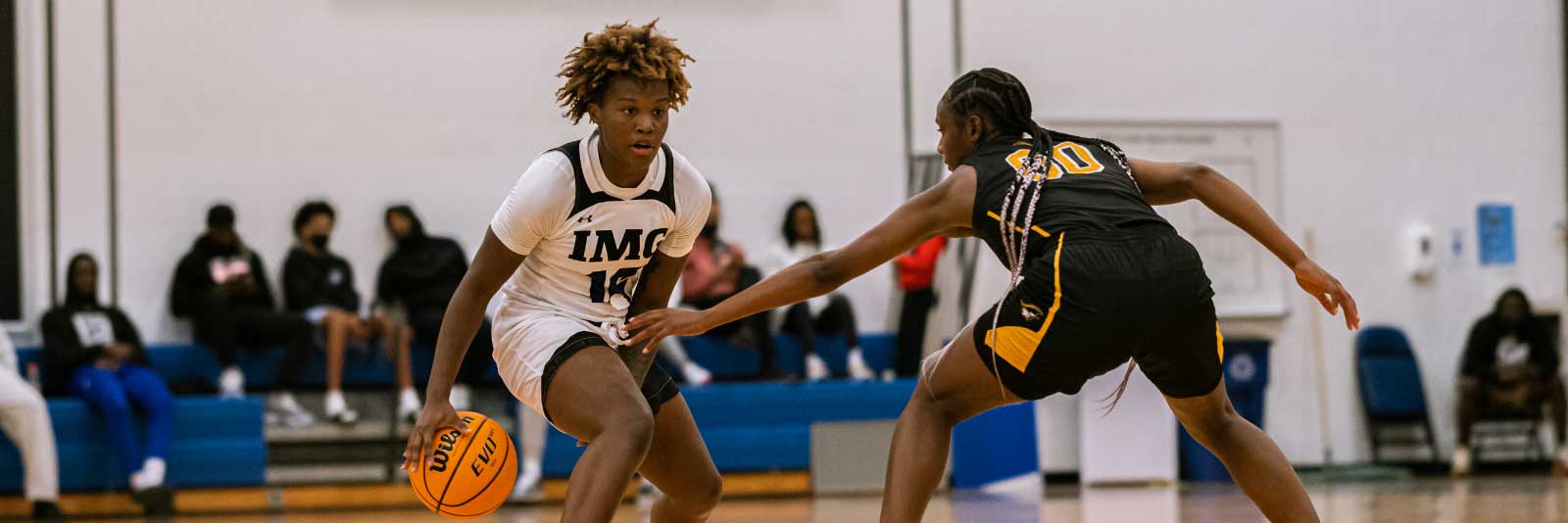Basketball Recruiting Rankings: The Ultimate Guide

Basketball recruiting rankings consist of ratings of high school players overall, by position and by state as well as basketball team rankings of which colleges nationally and by conference have the best overall classes. The latter set of rankings helps fans learn which teams may be the best ones in the years to come.
Of course, college basketball recruiting rankings are an inexact science, so all basketball recruiting rankings should be taken with a grain of salt. We don’t know exactly how the best high school athletes will perform in college or if they will make it to or be contributing players at the professional level afterwards. However, basketball recruiting rankings remain important to those looking to be basketball commits as players listed are who they are competing against for scholarships and, in some cases, playing time.
The major basketball recruiting rankings such as 247 basketball recruiting rankings, Rivals basketball recruiting rankings and ESPN basketball recruiting rankings all use star ratings in ranking top basketball recruits. The highest is five stars while the lowest is two stars. Nobody receives one star; you either receive two or more or zero.
But it’s important to remember that basketball recruiting rankings can be inaccurate at times in both directions. Not only do some blue chippers falter and not contribute much in college, there are also others who were not all that highly thought of in the basketball recruiting rankings but ended up not only being a top college player but also, in some cases, doing well in the pros. One example is Jimmy Butler, who has been a multiple NBA All-Star and Olympian. He was 1,253rd in his recruiting class before he went to Tyler Junior College prior to playing at Marquette University and heading off to the NBA.
College basketball recruiting rankings and star rankings
A lot goes into basketball recruiting rankings as the various organizations that rate and rank them do their best to project how impactful these players will be at the next level. This is done via a variety of ways. For example, they tend to have dozens of analysts spread out across the country who take a look at top players any way that they can, including in person when possible as well as through film evaluation.
The ratings then allow these services to rank players, first within star ratings and then within those subgroups as well as by geographical region and position.
- Five-star prospects are the best of the best. Just a few dozen if that will receive this type of rating, and demand for them is high as those involved with UNC basketball recruiting, Michigan basketball recruiting, Kentucky basketball recruiting and recruiting efforts at other top schools tend to be highly interested. Players who are rated at five stars comprise roughly 1 percent of the basketball players who are at two stars and above.
- Four-star prospects are also very talented players and in the top fraction of a percent of high school players nationwide. There will be a few hundred in this category, and these players are expected to have a significant impact on whichever college team he or she heads to. Professional play after college is often expected as well.
- Three-star prospects tend to be amongst the top players in their region, will generally develop into a starting player for an NCAA Division I team and have potential to play professionally after their time in college is over.
- Two-star prospects listed in various NCAA basketball recruiting rankings are expected to be able to play ball at a Division I school but is not expected to be a regular starter or to become a pro afterwards.
- Zero-star prospects or those who are not on the radar by those compiling college basketball recruiting rankings or from Division I schools and tend to either walk on at those colleges or play for an NCAA Division II or III or NAIA team. However, it’s important to note that only a small percentage of high school players end up playing college ball at any level, so that is still an impressive achievement and can make for a fulfilling collegiate experience.
What is a Blue Chip prospect ? What is a Yellow Chip athlete?
Other terms related to the star ratings are blue chip and yellow chip. Although blue chip is one that doesn’t have an exact definition, most view it as describing those who have rated at five stars or at five or four stars. Conversely, yellow chip athletes are those who are at the next level, still highly in demand but not nearly as much as is the case for blue chip athletes.
NCAA basketball recruiting rankings
It’s recommended that top basketball recruits research who their competition is to get a feel for what they’re up against overall, by position and by school. Fortunately, due to how much interest there is amongst fans and others in the college basketball recruiting process, a lot of information is out there from a variety of sources.
Here are some of the most respected NCAA basketball recruiting rankings:
- ESPN basketball recruiting rankings
- Future150 basketball recruiting rankings
- Scout basketball recruiting rankings
- Rivals basketball recruiting rankings
- 247 basketball recruiting rankings
Basketball scouting reports
Although much of what goes into basketball recruiting rankings cannot be easily put into a few words or numbers, the information that’s included in scouting reports can be quite useful to a lot of people. Those accompanying NCAA basketball recruiting rankings generally include information such as team(s) played for, grade in school, height and weight, but they can also include interesting descriptions ranging from a few sentences to several paragraphs. These can go into detail on which positions the players have played and can play, how comfortable they are around the basket, their leadership ability and potential and how quick they are, both in terms of acceleration and overall pace. Finally, lists of colleges that are interested in the players and ones that the players are interested in are often shown.
Of course, the information that is included in scouting reports will fluctuate some from source to source.
What is a project recruit or sleeper recruit?
Project or sleeper recruits are those who are not very high in the NCAA basketball recruiting rankings and are not expected by many to put up top college basketball stats but who do have the potential to prove the prognosticators wrong and do well in college. What sets some of these recruits apart from those who simply surprise in college and possibly the pros too is due to things about them that coaching staffs see and realize could result in more potential than is otherwise being shown.
Perhaps somebody is not high in the college basketball recruiting rankings because he or she recently started playing the sport, but coaches can see that his or her potential is high for that reason despite the current ability not being all that great as compared to others of the same age. Another example can be someone who is playing out of position for a high school team as compared to where their strengths would be in college such as a center at a small high school who may be perfect as a shooting guard in college.
Types of basketball commitments: Silent, verbal and signed
Once top basketball recruits have gone through the recruiting process and have decided, it’s time for that to become a commitment. There are three types of commitments, and only one of them is binding.
- Silent commitment
- Verbal commitment
- Signed commitment
Someone who has taken part in a silent commitment is one who has told the coaching staff what the decision is and the coaching staff agrees and wants the player to be a part of the program but who has not told anybody else outside of family and close friends. In other words, the commitment has not been made public.
A verbal commitment is the same except that it now has been made public, including to other schools who had been in the recruiting process prior to this point as well as to national and local media outlets.
However, silent and verbal commitments are ones in which both sides could back out.
A signed commitment occurs when a National Letter of Intent has been signed. Once this has been done, both the university and the student-athlete have committed to providing and accepting a scholarship for at least one academic year. Also, all recruiting efforts by other schools must stop at this point and can only resume if the player later, in their collegiate career, enters the transfer portal.
How to improve your basketball recruiting rankings
Anything that you would do to improve your basketball recruiting rankings would also help you get more noticed by coaching staffs and have a wider selection of schools to choose from. Of course, that makes sense since those compiling college basketball recruiting rankings are attempting to predict as accurately as possible which players will end up being the most highly recruited ones to be offered scholarships.
One of the best ways to improve your standing in both areas is by creating highlight videos. In most cases, coaches will appreciate not needing to search for these, and it also makes the job easier on those who compile NCAA basketball recruiting rankings.
Another activity to consider is participating in basketball camps. These help provide you with more exposure than might be possible while playing for your high school team or otherwise. Also make sure that you understand and keep up with the basketball recruiting timeline. Many of the activities listed there will also have a direct impact on your college basketball recruiting rankings.
It’s also important to note that the recruiting process is competitive in women’s basketball as well and that highlight videos and camps should be taken advantage of by women’s players too. Also take a look at the recruiting timeline as it relates to the female side of the sport so that you can improve your status in the women’s basketball recruiting rankings.
How NCSA can assist
NCSA College Recruiting continuously assists student-athletes who participate in a variety of sports navigate the sometimes-confusing recruiting process and helps them put themselves in the brightest light possible so that the best fit possible can result. The organization has been doing this since Chris Krause, a football player in the 1980s, was bewildered at times trying to figure out the recruiting process and wanted to ensure that nobody after him would have to suffer from that too.
In the years that followed, NCSA has developed into an organization that is trusted by athletes and coaches alike, and it has received top reviews, endorsements and media coverage. For example, Google Reviews has it rated at 4.9 stars out of 5 from more than 2,000 reviews.
Would you like to be amongst the 30,000 student-athletes who work with NCSA and commit to a college for sports every 12 months? Do you want to be part of a network that includes 50,000 coaches? In order to gain as much exposure as possible and get what you bring to the table academically and on the court in front of coaching staffs at schools that would be a good fit for you, join the NCSA network and get your own collegiate path under way.
If you would like to gain this added exposure and get discovered by more coaches, start your free profile today.
















